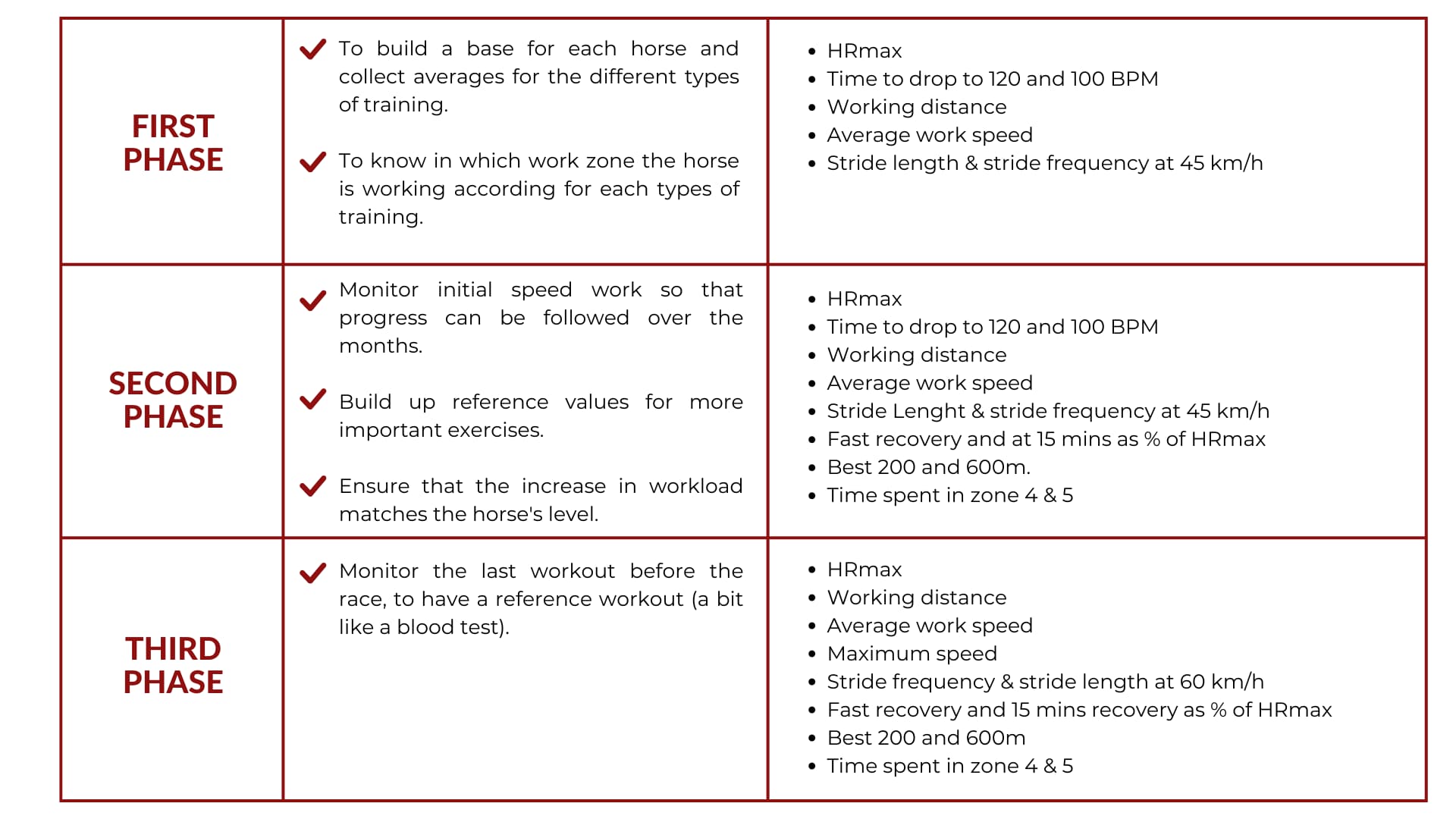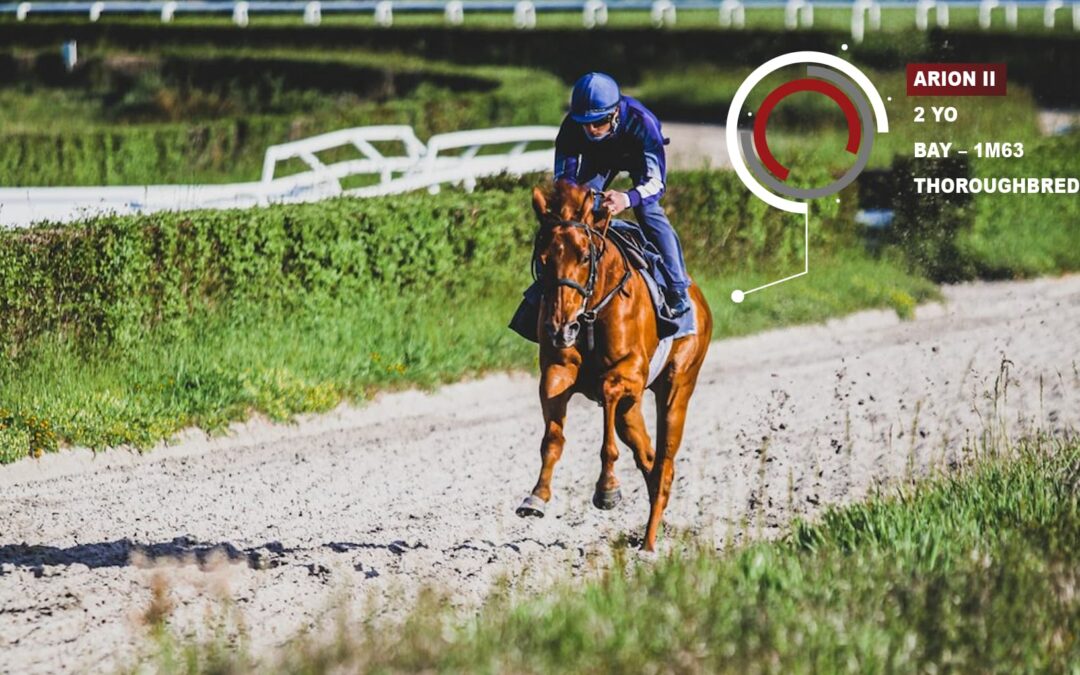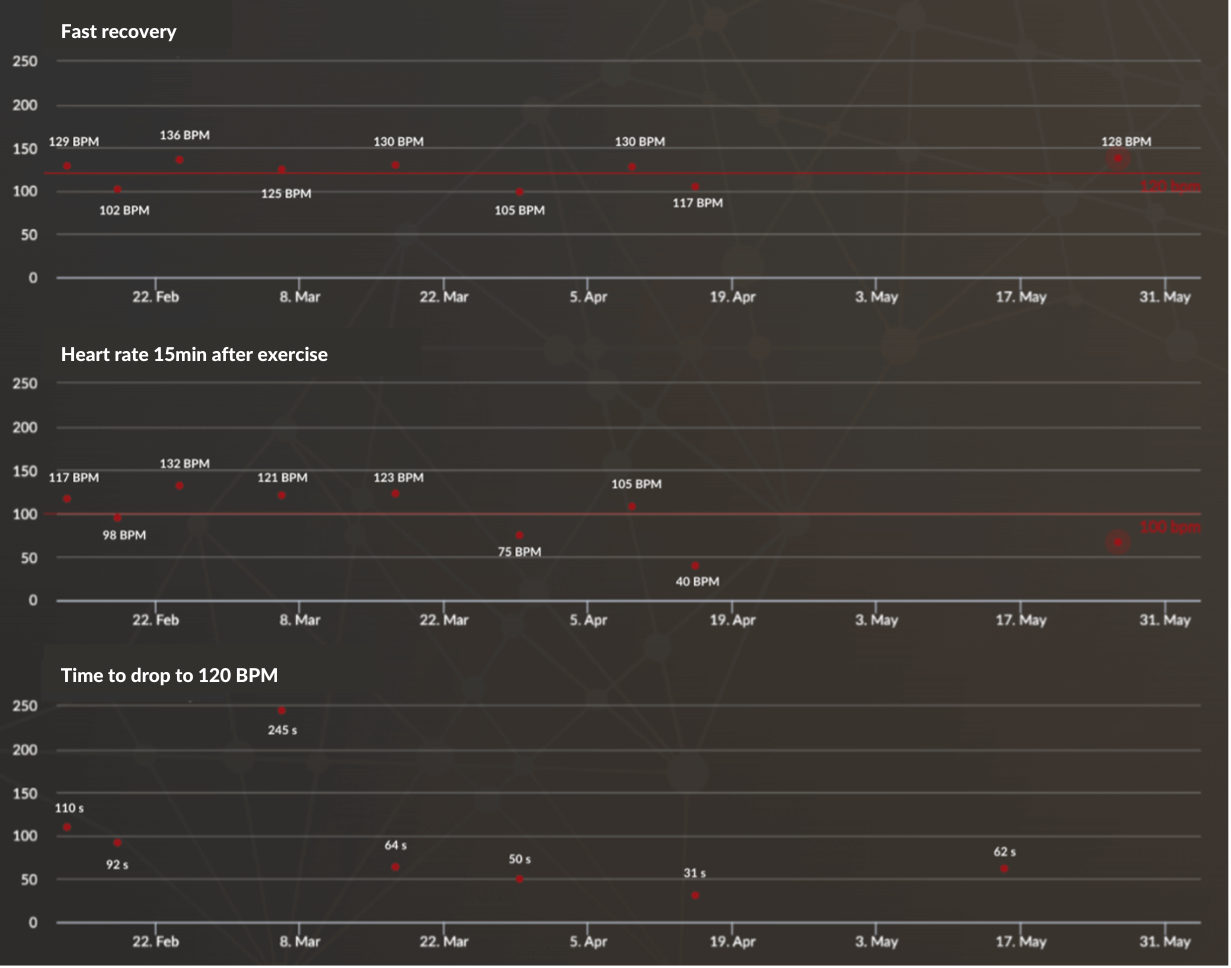Every winter, a new generation of racehorses arrives at the stables. Unbroken and pre-trained, these two-year-olds are ready to start training for their racing debut.
This first period of work is crucial for these young horses and many questions are raised: how to follow the evolution of these two-year-olds? How can we progressively increase their workload, balancing between overtraining and undertraining? Who are the most advanced two-year-olds in the group? How to detect future performers? What distance to start with?
Longitudinal monitoring of the young horses’ training data allows you to support your feelings and to feed your decisions with objective figures.
Longitudinal monitoring in young racehorses
What is longitudinal monitoring?
To analyse your 2yos’ evolution, we advise you to build up a database of the different training phases, from the very first months. This will allow you to identify references that will be used throughout the horse’s career, in order to assess the progress.
You’ll be able to look at the training data with the first few months in mind.
Here is what we advise you to do:
First collection phase – Building the foundations
In this fisrt stage, it’s a good idea to put Equimetre on once or twice per exercise type, after the first few weeks of training.
It’s interesting to see how the horse is working, in which heart rate zones, to make sure that he adapts correctly to his new environment. This will allow us to have average values and to understand how the horse is coping with the work, to follow his evolution over the months.
During these first months of training, the first improvements in the cardiovascular system can be observed.
We often collect surprising data with young horses. It’s important to take a step back when analysing their data. They’re in unfamiliar environments and discovering new things, which makes them more easily excited. It’s important to establish a routine and expose them to different external elements (cars, noises, people, etc.) before drawing hasty conclusions. It’s therefore important to regularly collect data, but you need to start this work AFTER they have discovered the tracks, so they can be more relaxed and not have data influenced by “excitement”.
You also don’t want to get lost in the data, so simply tracking 2/3 workouts at a key stage in the first phase will be more than enough to get an initial idea of the horse’s progress.
Second collection phase – Monitoring the increase in training workload
Once this first database has been collected, it’s interesting to monitor the next steps of the training: when you start to ask more speed, and on longer distances.
The goal here is to monitor the first slow gallops, the gallops, and especially the first speed works (breeze, jumpout, barrier trials etc.). This data is very important to ensure that the increase in workload is in line with the horse’s progress. Indeed, the recovery data demonstrates the work assimilation, and therefore allows to adjust the different exercises according to the needs of each horse.
It’s also possible to ensure that the horse has not developed any underlying problems following an initial intense workout, by comparing the warm-up data with the reference data (heart rate during the warm-up, symmetry, regularity) established during the first training phase.
➡️ To find out more about young racehorses’ recovery, we recommend this article.
Phase three – Pre-race photo training
You can, for example, follow the training of one of your horses before a race. You will collect significant data: his maximum speed and his ability to maintain it, the level of effort made, the horse’s reaction to the effort, his recovery parameters and, finally, his stride profile.
Once this data has been collected and the race has passed, you have two options depending on the result:
- If the race went well, thanks to the recorded data, you’ll be able to know 100% if the horse is in good physical condition for the next pre-race workout.
- On the other hand, if the race did not go well, if the horse did not finish well, you’ll have benchmarks to change some things in the next race preparation, to optimize your chances of success. For example, you can use the stride data to question the initial decision to run the horse over a given distance.
What data should you look at first and why?
Maximum heart rate
This is one of the most important data, because it’s specific to each horse, and allows you to analyse the recovery, but also to quantify the effort made. A few training sessions with an acceleration over 600m allow you to obtain it with Equimetre.
The horse’s recovery
The more fit a horse is, the better his recovery is. Hence, it’s an important performance indicator. Horses have different levels of recovery, and it’s interesting to objectivize the capacities of each one, individually. You should bear in mind that a young horse will rarely reach the usual averages of older, more mature horses. Therefore, it’s not appropriate to compare their data. It’s more interesting to compare data from the same generation, or from a good horse when he was young.
Time to get down to 120 bpm & 100 bpm
This is a very relevant data for young horses, because as mentioned before, they rarely reach the averages of mature horses. The average time to get down to 120 BPM is between 60 and 120 seconds. If this is high, it can be considered as stressful work.
In the example above, Arion II is a horse with a very low maximum heart rate of 210 BPM. When we look at the rapid recovery, we can see that there is not much variation. However, when we look at the time to get back down to 120 BPM, we can see that the data fluctuates much more. Indeed, he took 245 seconds to recover for the high intensity exercise on March 8, and much less time for the following work.
Thus, the time to get down to 120 BPM is a more accurate indicator of the work intensity and the young horses’ fitness.
Once the work is well advanced, and the horse starts to show good skills, we can start looking at the performance data: speed, best 200m and acceleration.
Amplitude and cadence at 45 km/h to determine the locomotor profile
Although the initial work is low intensity, it’s quite possible to get a first idea of the locomotor profile of a young horse at 45 km/h.
The data will of course change as the horse becomes more muscular, but it offers some initial insights into the horse’s career.





